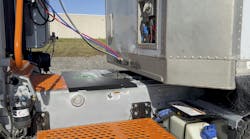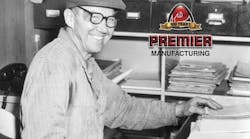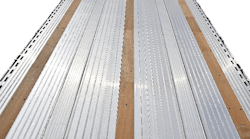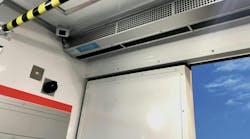THIS is not your father’s aftermarket. And, in many cases, it’s not even the same aftermarket that existed when many of today’s executives started their careers in the industry.
“Cataloging has been changed, parts identification has been changed, distribution changes have been going on through consolidation both on the OEM and dealer side and independent distribution side, there’s much more technology and it’s complex,” said Stu MacKay, president of MacKay & Company. “We’re at least a generation away from probably the aftermarket that many of us grew up and matured in.”
MacKay said the medium-duty truck universe has not grown, with Class 6-7 remaining at nearly 1.5 million in 1974 and in 2014. All the growth has been in the Class 8 market, which has gone from 935,000 in 1974 to 2.9 million in 2014.
“There’s been a dramatic shift in the ways vehicles are being used, and in the type of vehicles being employed—much of it being driven by deregulation, consolidation, and shifts in distribution systems and patterns,” he said. “The universe today driving the aftermarket is dramatically different than it was 20 years ago. Agriculture used to account for 25% of the medium-duty trucks. Now, it’s 10%. School buses have gone from 7% in 1974 to 24% now. Only 75% of the universe of trucks are truly what we’d call commercial freight vehicles.”
For-hire and LTL carriers have grown. Owner-operators accounted for 10% of trucks in 1974, and now 6%.
“It’s become increasingly challenging for a lot of businesses that find themselves as owner-operators to survive in the trucking environment we have in 2015,” MacKay said.
One of the major changes over the last couple of decades involves the Class 8 engine business.
“If you look at 1986, as an example, aside from Mack, which for decades has been all Mack engines and chassis, almost everybody else has been heavily dependent on outside engine suppliers: Cummins, Caterpillar at that point in time and Detroit Diesel at that point in time,” he said. “Aside from a little bit of International and a small piece of Volvo, everything else was vendor-supplied engines, aside from Mack’s position with proprietary componentry. In the last 12 months, it’s a totally different picture. It’s either a captive engine or Cummins. Detroit Diesel was acquired by and now integrated into Daimler. We’ve moved significantly from independent engine supply, which drives a major piece of that segment of the aftermarket, to much more heavily captive componentry.”
John Blodgett
Vice president, Sales & Marketing, MacKay & Company
Blodgett said the average age of the Class 8 population was an all-time high of 9.74 years in 2014 after steadily increasing since 2007’s 8.68, which he described as “a positive for the aftermarket.”
Class 8 vehicle utilization is 95% in lease/rental, 91% in for-hire carrier, 77% in construction/mining, and 56% in agriculture.
There has been a strong correlation between retail sales and aftermarket parts demand. The best Class 6-7 years were in 2005 (149,000) and 2006 (161,000), and the same for Class 8 (253,000 and 284,000, respectively) and trailers (276,000 and 283,000, respectively).
“The sweet spot is seven to nine years after the boom—that’s when you see the highest parts consumption average per year,” Blodgett said. “That’s the sweet spot of aftermarket opportunity for a vehicle.”
Aftermarket performance, based on an aftermarket index of 20 companies, was up 13.8% in 2014 over 2013. The DataMac model, which was developed by MacKay and surveys people who maintain the vehicles, forecasted the market to be up 10%.
US parts replacement demand was at $26.2 billion in 2014, including Class 6-8 trucks, plus trailers and chassis.
The breakdown:
• By vocation, for-hire carriers (29%), lease/rent (13%), and construction (12%).
• By component group, power generation (37%), undercarriage (19%), and power transmission (15%).
• By channel of distribution, OE dealer network (46%), heavy-duty distributor (17%), and independent garage (11%).
• By type of replacement, new (68%), factory remanufactured (18%), and local rebuilt (7%).
In terms of heavy-duty aftermarket distribution, the OE dealer network has gone from a 34% share in 1982 to a 46% share in 2014.
“A lot of that has to do with truck manufacturers really getting dealers to focus on the huge opportunity related to those vehicles you sell for parts and service,” he said. “The other big change is in the auto parts distribution channel. That represented 18% in 1982, and now it represents 4%. With the introduction of diesel and the move to more vehicles in Class 8, that channel was really strong during the 1980s.”
He said 55% of sales go through the OE distribution system. Remaining are HD distributors, independent garages, engine distributors, auto parts, and others. Thirty-two years ago, OE accounted for 34%.
“Reman has increased about a third over the last 32 years,” he said.
The outlook is for steady growth (including 2% price increases), going from $26.19 billion in 2014 to $32.43 billion in 2019.








